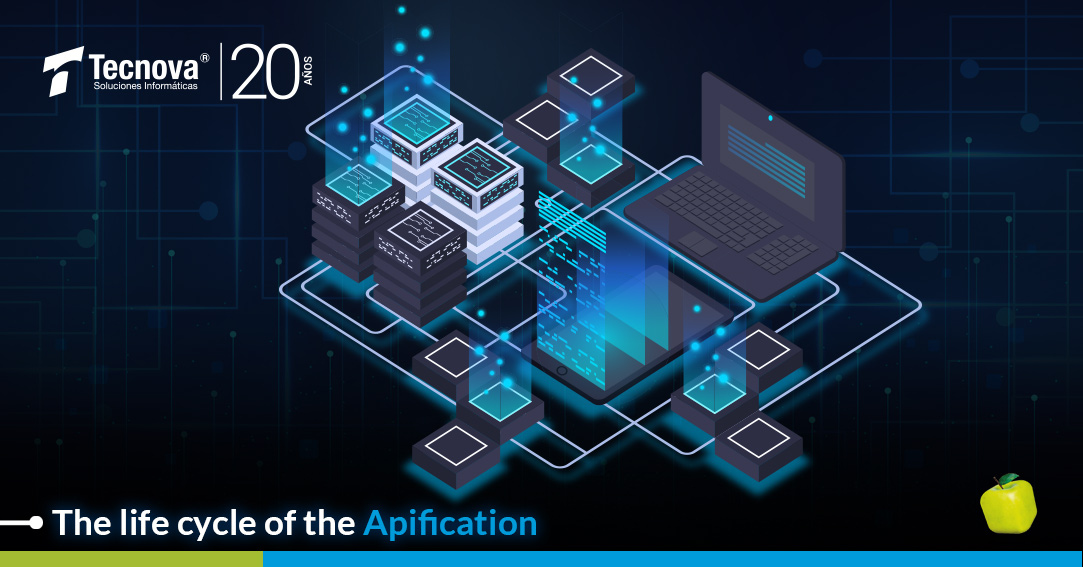What is apification and how to apify my business?

If we mention “Application Programming Interfaces”, does it ring a bell, maybe it doesn’t !, but if we write APIs, you’ll remember what it means. Application programming interface (APIs) are “defined interfaces where interactions occur between a company and applications that use its assets,” according to the HCL company.
In other words, and as Profile explains, an API is “a code that two computer programs use to communicate or interact with each other”.
Briefly: API Features
The path of THE APIs is not new. In 2000, in the Service Oriented Architecture (SOA) movement, business enterprises such as Salesforces.com developed the first APIs. According to ApiEvangelist, this company “identified that customers needed to share data between their different business applications, and APIs were the way to do it.” At the time, Ebay launched the “eBay Application Program Interface, having a similar goal as its competence: to standardize the way applications integrated to build a business ecosystem. Same path would be followed by well-known social platforms, such as Facebook, Twitter, Foursquare, Instagram, among others.
Nevertheless, why did platforms with such different objectives come to APIs for the development of their architectures?
According to a report by the Institute of Architecture of Application Systems,, APIs are “used to integrate applications with business partners, suppliers, and customers.” This, because the API approach is coupled to a wide range of future uses. It allows developers to create end-user applications, “albeit with a different approach”, says the institute – “focusing on developers to allow them to program.” Therefore, as Profile asserts, each API has documentation that indicates the specifications that define how information exchange is performed. This allows the implementation of procedures without having to reprogram them”.
Following this path, Paradigma Digital asserts that “APIs make it possible to interconnect modules and applications, facilitating access to their backends and allowing reuse of services
What is apification: benefits
All these features, in line with the purposes of Digital Transformation and Automation of companies, makes apifying their processes more required every day.
However, what do we understand about how to apify? Accelirate defines it as “the technology that allows an organization to interact and share information…”. This way, it allows companies to “expose the key characteristics of applications and transact with their internal or external business partners”. Thus, the purpose is to “extract value and new sources of income from their existing technology investments.” Among some benefits that involve stacking, according to HCL are:
- Cost reduction: APIs are a cheaper way to build applications by increasing service reuse. Provide a usage-based evolutionary development platform.
- Increased agility and incursion into different ecosystems: Because APIs offer integration with any technology stack, they enable greater productivity for developers.
- Increase innovation and new business models: By enabling others to build applications that integrate with their captive data and processes, companies see new applications that use their services in new contexts.
- Increased consumer loyalty: By engaging consumers and developers in a new generation of apps, the company can increase brand awareness and loyalty in core groups.
How to apify Processes? Lifecycle
It’s not easy to start with apification processes. Before this, it is necessary to perform a series of processes, the so-called “life cycle” of the apification. According to the API Evangelist business and technology site, these are the four areas for apifying processes:
1- Discovery (Objectives, definition of them, data sources and discoveries used, discovery formats, catalogs, communication and support): define digital resources and capabilities of the company.
2- Design (Version Definitions, webhooks, event-driven, protocols, virtualization, testing, landing page, documentation, support, route map): the design of the API when delivering all resources.
3- Development (definitions, discovery, virtualization, database, storage, DNS, implementation, orchestration, performance testing, security, communication, support). Consider that it is needed to properly develop API resources at scale and move from design to production.
4- Production (process definitions and virtualization, authentication, management, plan registration, home page, first steps, documentation, codes and license used, support, FAQs, roadmap, legal change log, monitoring and performance, tracking, security, analysis and maintenance—Based on the production needs of an API operation, extracting the basic components of the APIs available on the web.
5- Scope (Definition of success, sustained adoption, communication, support, virtualization, measurement and structure): it is structured more based on how it manages the scope around its APIs. Whether in internal, partner, or public API resources.
6- Governance (design, test, monitoring, performance, security, observability, discovery, analysis and existing competence): see how you can start defining, measuring, analyzing and providing guidance on API operations at the highest levels.
To accompany in this process, Tecnova is prepared to advise you at all stages of the apification process.








